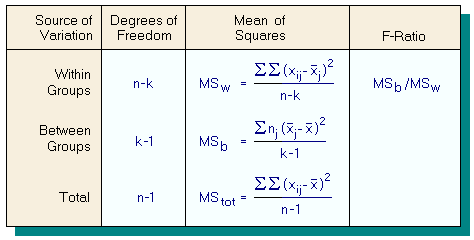 You are working with the text-only light edition of "H.Lohninger: Teach/Me Data Analysis, Springer-Verlag, Berlin-New York-Tokyo, 1999. ISBN 3-540-14743-8". Click here for further information.
You are working with the text-only light edition of "H.Lohninger: Teach/Me Data Analysis, Springer-Verlag, Berlin-New York-Tokyo, 1999. ISBN 3-540-14743-8". Click here for further information.
 You are working with the text-only light edition of "H.Lohninger: Teach/Me Data Analysis, Springer-Verlag, Berlin-New York-Tokyo, 1999. ISBN 3-540-14743-8". Click here for further information. You are working with the text-only light edition of "H.Lohninger: Teach/Me Data Analysis, Springer-Verlag, Berlin-New York-Tokyo, 1999. ISBN 3-540-14743-8". Click here for further information.
|
Table of Contents  Bivariate Data Bivariate Data  Regression Regression  ANOVA ANOVA  ANOVA - How to perform it ANOVA - How to perform it |
|
| See also: ANOVA, Combination of Several Distributions |   |
The basic assumptions which have to be fulfilled are
If these assumptions are not met, the analysis of variance can still
be performed, but using different test procedures which are beyond the
scope of this text.
Assuming that the data follows a normal distribution, we first have
to test for equal variances. Depending on the samples several tests are
available:
In the next step the analysis of variances is performed (remember the goal is to compare means, not variances). The null hypothesis for the ANOVA is that all sample means are the same. In order to achieve the ANOVA we have to calculate the mean of squares within each sample MSw and the mean of squares among the samples MSb. The mean of squares (MS) is defined as the sum of squares divided by the degree of freedom. The test statistic F, which is defined by the ratio of MSb to MSw, is distributed according to an F distribution. A value higher than the critical value Fk-1;n-k indicates that the null hypothesis has to be rejected.

Last Update: 2006-Jšn-17